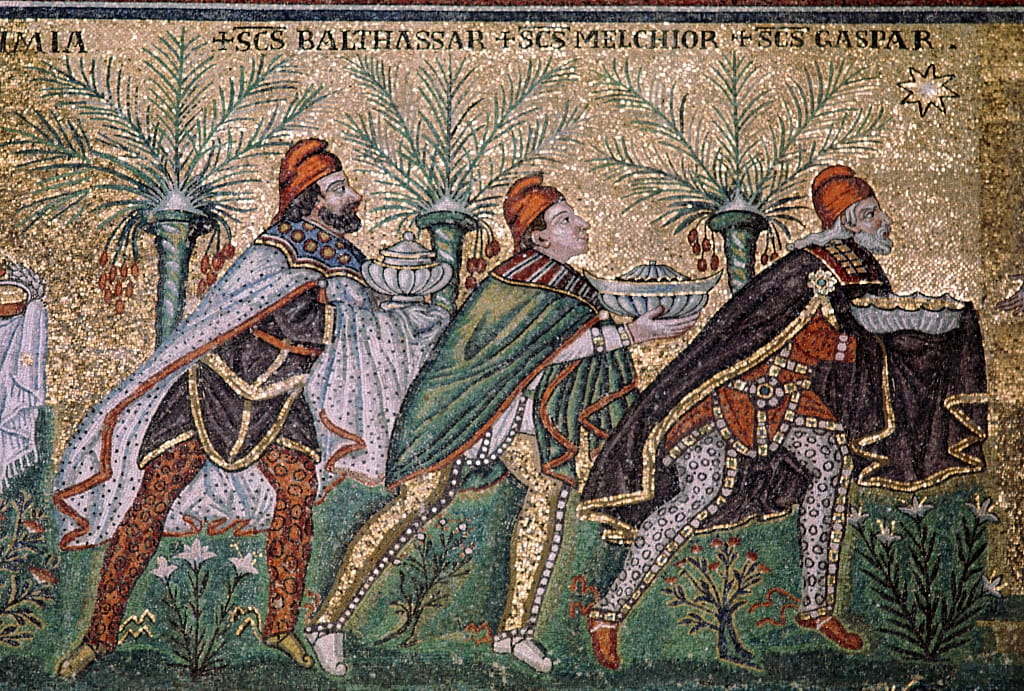
From The Visual Commentary on Scripture
by Timothy Verdon
“As a subject in art, the Adoration of the Magi illustrates the events described in Matthew 2:1–12 and elaborated in the liturgical festivity known by the Greek name of ‘Epiphany’ or ‘Manifestation’. The central meaning of the Adoration for Christians is in fact articulated in 1 Timothy 3:16, which says that Christ, the Messiah promised to the Jews, was also ‘proclaimed to the gentiles, believed throughout the world’.
“Matthew’s Gospel was written for a Jewish public, and his account of Wise Men ‘from the east’ bringing gifts to honour the child whose ‘star’ they had seen rise realizes Isaiah’s words to the Chosen People: ‘The nations will come to your light and kings to your dawning brightness’ (60:3 NJB).
“A sixth-century mosaic in the church of Sant’Apollinare Nuovo at Ravenna suggests this inter-cultural message, showing the Magi clothed in garments that would have looked exotic to a Western audience, wearing ‘Phrygian’ (Anatolian) caps, and advancing with their gifts among palm trees. The mosaic, which gives the Wise Men’s traditional names—Balthasar, Melchior, Gaspar—, is part of a larger programme, and visitors to Sant’Apollinare see the Magi approaching figures of Mary and the baby Jesus, in reference to Matthew’s statement that, when the star they followed halted, they finally saw the Child and his mother (Matthew 2:10–11).
“Behind the Magi in the Ravenna mosaic, we see a procession of female martyrs who also advance toward Christ. These evoke a further meaning attributed to this event by Christian theologians. One of the gifts brought by the Magi, myrrh, was an unguent used to embalm the dead, and Christ’s manifestation to all nations was thus seen to include the mystery of his death: an interpretation legitimated by Matthew’s insistence on King Herod’s attempt to eliminate the baby Jesus, killing all infants of the same age (Matthew 2:13–16). The women martyrs following the Magi in the mosaic had shared Christ’s death.
